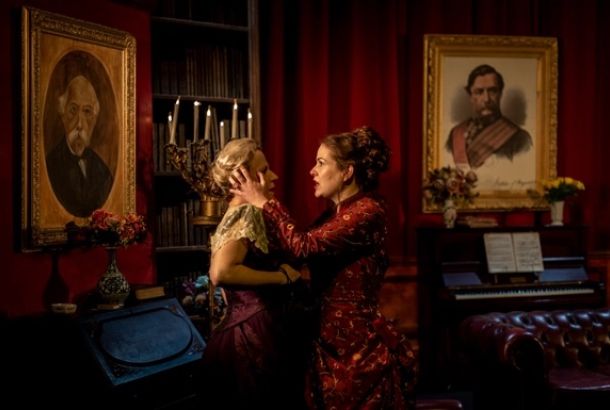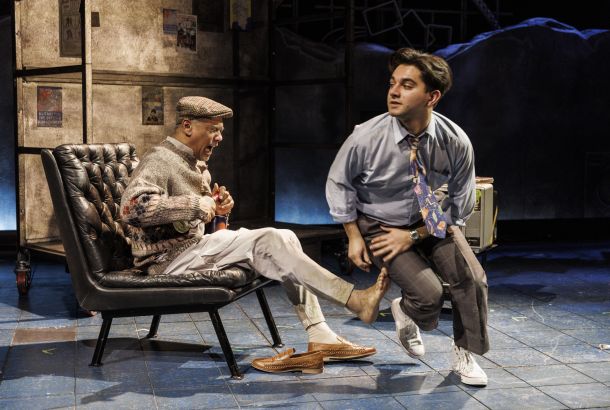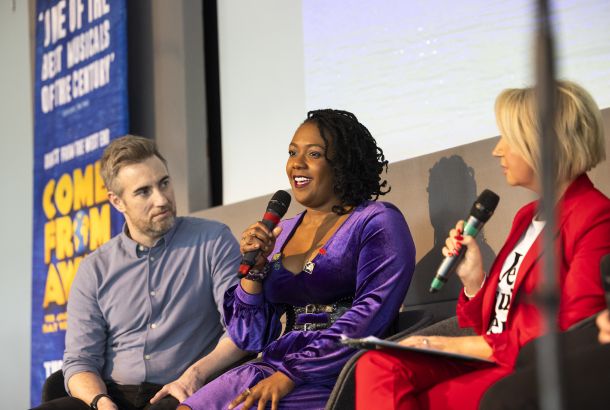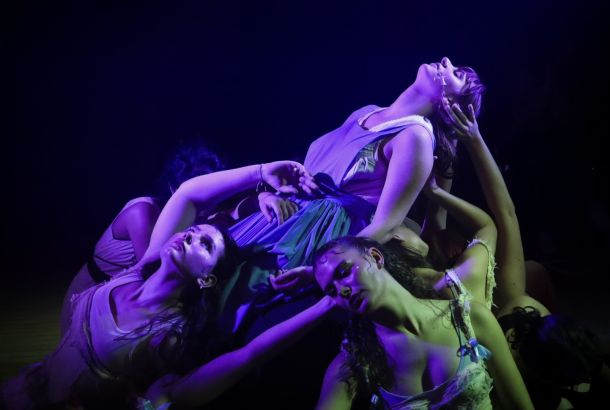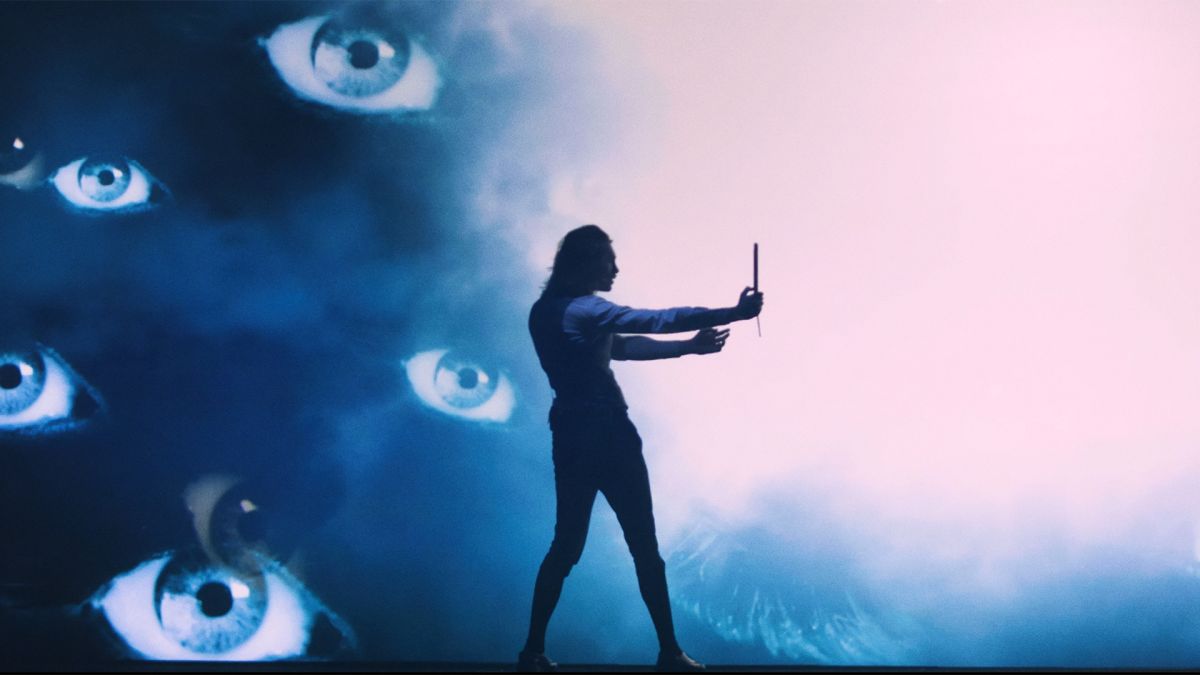
“The show that divided opinion,” is how Cages has recently marketed itself, acknowledging and poking fun at the wildly different reactions folk have had to the musical. The critical reaction in LA was positive whilst London critics have been pretty scathing in their criticism. Audiences, meanwhile, seem to have enjoyed the show.
At the very least, you can appreciate Cages as alternative and unique. The one and two-star reviews are ludicrous. The show is imperfect, but the groundbreaking visuals alone are enough to shower this production in praise (speaking of showers, the rain scene is captivating, but more on that later).
Cages is, essentially, a rock musical with state-of-the-art technology. It is set in a dystopian society where emotion is prohibited; hearts are literally locked away in cages. The protagonist, Woolf, is played by Jack Butterworth (who replaced Cage’s co-creator, CJ Baran). Woolf, predictably, falls in love and sets out to topple the totalitarian regime and bring love into the world. The story is nothing innovative; the script relies on conventions and clichés. The show values style and spectacle over substance, at least when it comes to the story.
Whilst the main character, Woolf, is played by a real-life actor, the deuteragonist and tritagonist are both holograms. The former (Madelene, the female lead and Woolf’s love interest) is played by America’s Next Top Model’s Allison Harvard and voiced by Frida Sundemo, with Mackenzie Smith credited as “Madelene silhouette dancer”. The latter, The Chemist (a mysterious figure who narrates the musical), is played by Harwood Gordan.
Whilst using a hologram for the female lead is an extremely interesting and ambitious idea, it works better in theory than it does in practice. There is, unsurprisingly, a lack of chemistry between the two lovers – and, given the fact that love is at the core of this story, that is a bit of a problem…
But seeing Butterworth interact with a hologram is superior to watching a believable love story unfold: every other musical has that; we’ve seen it countless times before; Cages offers something new.
Indeed, Butterworth’s ability to always be in the right place at the right time is masterful; he treats the projected imagery like a living, breathing beast.
However, something must be said about the production side-lining its epic ensemble in favour of holograms. The ensemble is woefully underused; they merely play background characters. The musical begins with one member of the ensemble standing on the floor in front of the stage and introducing the story, but after this, the ensemble are just nameless civilians of Anhedonia. Their biggest amount of stage time is during the interval, when they silently and terrifyingly interact with the audience.
The opening number, ‘Welcome to Anhedonia’, is electrifying. It’s very musical theatre, albeit rock; it’s a grand introduction to this fictional world. It is led by the ensemble, with scores of civilians projected behind them. Sadly, there is not another ensemble-led piece until the end of the second act – it, too, is high-powered and formidable.
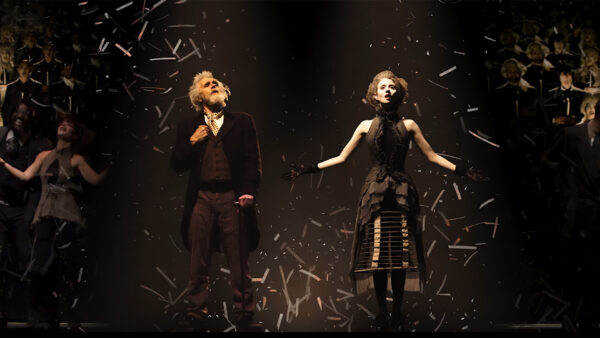
The musical relies heavily on technology. There is an empty stage, and the occasional small piece of set, but scenery is established with moving images and video footage being projected on to the screens in front of and behind the stage. The multimedia musical is a cross between film and theatre. At times, it feels more like a live series of music videos than a stage musical.
The projections are epic from the very beginning. A highlight includes a scene in which the Chemist shows Woolf an old tape, which is projected on the wall. Eventually, the footage becomes smaller, as it comes to an end, and Woolf and the Chemist walk back onstage; we return to the “real” world. The transition is seamless.
This scene is rivalled with a scene in which Woolf is handed an elixir, which is not an actual object but rather a projection. He almost drops it but reaches down to catch it and raises his hand to reveal an actual elixir.
The visuals are especially remarkable during (SPOILER) the scene in which Woolf is electrocuted; the electric imagery was striking (pardon the pun). Most people, however, will single out the awe-inspiring scene in which Woolf puts up an umbrella to shield him from the rain as their favourite.
The score is sublime; the songs have a pulsating bass and infectious hooks. However, the lyrical content can be a bit blasé, and none of the later songs match the enthralling opening number.
But whilst the book is kind of predictable and the songs a little same-y, Scenario Two have succeeded in creating a mesmerising, multi-sensory, multimedia, musical sensation, the likes of which has never been seen before.
Visually, it is a marvellous, mind-boggling feast for the eyes. But, whilst it purports to be a musical about the power of love, the reliance on technology, right down to its supporting cast, causes the play to, ironically, lack heart.
But that doesn’t bother me so much, for no production can be everything at the same time. Sure, Cages can be improved, but at least it offers room for improvement; there is potential for it to be a musical masterpiece. We must recognise that this is the first of its kind, and how lucky we are to witness such groundbreaking technology!
Cages is unlike anything you have ever seen before – and whilst some will never want to see anything like it again, I look forward to a future multimedia production with a book as inventive as its technology.
Cages runs at Riverside Studios until December 18.
